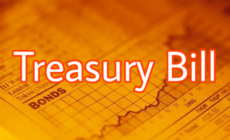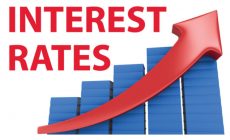This represents a drop of 1.1 per cent, when compared to the average rate at end-January 2018.
On a year-on-year basis, the end-February 2018 figure represents a drop of 2.4 per cent when compared to the same period last year.
The average base rate at the end of December 2017 was 25.7 per cent.
APR and AI data
The data is on the Annual Percentage Rates (APR) of interest charged on loans and credit advances and the Average Interest (AI) paid on deposits by banks.
Promoting transparency
The publication of these rates is to promote transparency in the pricing and provision of banking services.
Economic analysts explain the wide gap
Some economic analysts believe that the wide gap that exists between the monetary policy rate and the rate of inflation makes it difficult for lending rates of commercial banks to come down in the country.
Industries lament high interest rates
High interest rate has consistently been cited by the Association of Ghana Industries (AGI) as one of the major obstacles to doing business in the country.
Average of 10.1% interest paid on deposits
On the deposit front, the average deposit rate at the end of February 2018 was 10.1 per cent.
This represents a drop of 0.3 per cent, compared to the rate recorded for end-January 2018.
Compared to the end-February 2017 rate of 11.6 per cent, the end-February 2018 figure represents a drop of 1.5 per cent.
The average deposit rate was 10.4 per cent at the end of December 2017.
In all, the list covers 31 banks.
The APR is the true interest rate banks and non-bank financial institutions charge the public on loans and advances.
It reflects the true cost of borrowing and includes charges and commissions levied by banks.
Average interest paid on deposits is the average interest paid by banks on deposits over the period.
Base rate reflects the minimum interest rate that can be charged on loans and credit advances.
Bank of Ghana aims at promoting accountability of its decision making and build understanding of the monetary policy formulation process among stakeholders through the publication of these documents.
New formula for interest rate calculation to be implemented in April
Commercial banks in the country are expected to start using a new formula for interest rates calculation from April this year.
The Ghana Reference Rate, as it is referred to, is already being described by industry watchers as revolutionary because it could deal with this age-old problem of lack of transparency in determining interest rates.
The introduction has been influenced by challenges with the current module for interest rate calculations and attempts to move towards a more market-friendly and relevant structure.
The BoG is also looking at moving towards a system where there is a laid-down procedure of calculating interest rates among various commercial banks to ensure equity and high level of transparency
How would the Ghana Reference Rate work?
The Ghana Reference Rate, which would be influenced by current Treasury bills rate, the Bank of Ghana policy rate, inter-bank lending rates and inflation rate, would replace the current base rate setting for commercial banks.
The Ghana Bankers’ Association, in collaboration with the Bank of Ghana, is expected to come out with the Ghana Reference Rate on the first Wednesday after the end of each month based on data from the last working day of previous month.
The rate shall be published by the Bank of Ghana and also made available on its website.
Each bank is required to disclose to its customer in a facility, fees and charges, the size of the spread around Ghana Reference Rate that is offered to lend less than the Ghana Reference Rate and the factors responsible for the spread.
The spread may be unique and also depend on factors like customer risk profile, cash flow and facility available.
Benefits to loan seekers
The Ghana Reference Rate would be applicable to any fresh loan that would be closed by a customer from next month.
It is believed that this module would also help address the challenge of static rates when all the variables are going down.
Monetary Policy Rate
The Monetary Policy Rate (MPR) is the rate at which commercial banks borrow from the central bank on overnight basis (as a lender of last resort), to cover their short-term liquidity/cash flow gaps.
In Ghana, the minimum lending rates (base rates) of commercial banks are based on Bank of Ghana prescribed guidelines.
These guidelines were developed in consultation with key stakeholders.
Variables in BoG guidelines for determining base rates
There are several variables in the guidelines (market wide and bank specific ones) influencing the build-up of the rates.
The bank-specific factors include the banks’ operating costs, funding costs (interest on deposits and other borrowings) and expected return on equity (ROE).
The market-wide variable is the 91-day Treasury bill rate. It should be noted, however, that there are other constant variables in the guidelines.
One reason why commercial banks’ lending rates do not seem to move in proportion to the recent MPR reductions can be deduced from the factors listed above.
One can see that the MPR only influences commercial banks’ lending rates through banks’ funding costs, to the extent that a commercial bank has utilised the Bank of Ghana repo window during the period.
Commercial banks that are able to manage their short-term liquidity and rely less (or not at all) on borrowings from the central bank or from other commercial banks for a certain period may not have their funding costs going up or down as the MPR does same.
The funding costs may remain high if MPR comes down and customer deposit costs do not.
Additionally, even if the banks rely heavily on the Bank of Ghana MPR to fund their assets, it is important not to lose sight of the other variables.
Banks invest heavily in running their businesses, infrastructure, technology, human resources, etc.
Unfortunately, most of these are foreign currency denominated and are subject to inflation when the local currency depreciates against the exporting currencies, thus driving up operating costs.
The interplay of these factors largely determines the outcome of banks’ minimum lending rates in Ghana. Treasury bill rate or MPR may reduce or increase, but other variables may not.
Interest rates drop to 24.5%
- Posted on
- Comment
 – New formula expected to lead to further reductions
– New formula expected to lead to further reductions
Data published by the Bank of Ghana (BoG) shows that the industry average base rate of commercial banks has dropped to 24.5 per cent as of February 28, 2018.
By Elvis DARKO, Accra










 (Selorm) |
(Selorm) |  (Nana Kwesi)
(Nana Kwesi)